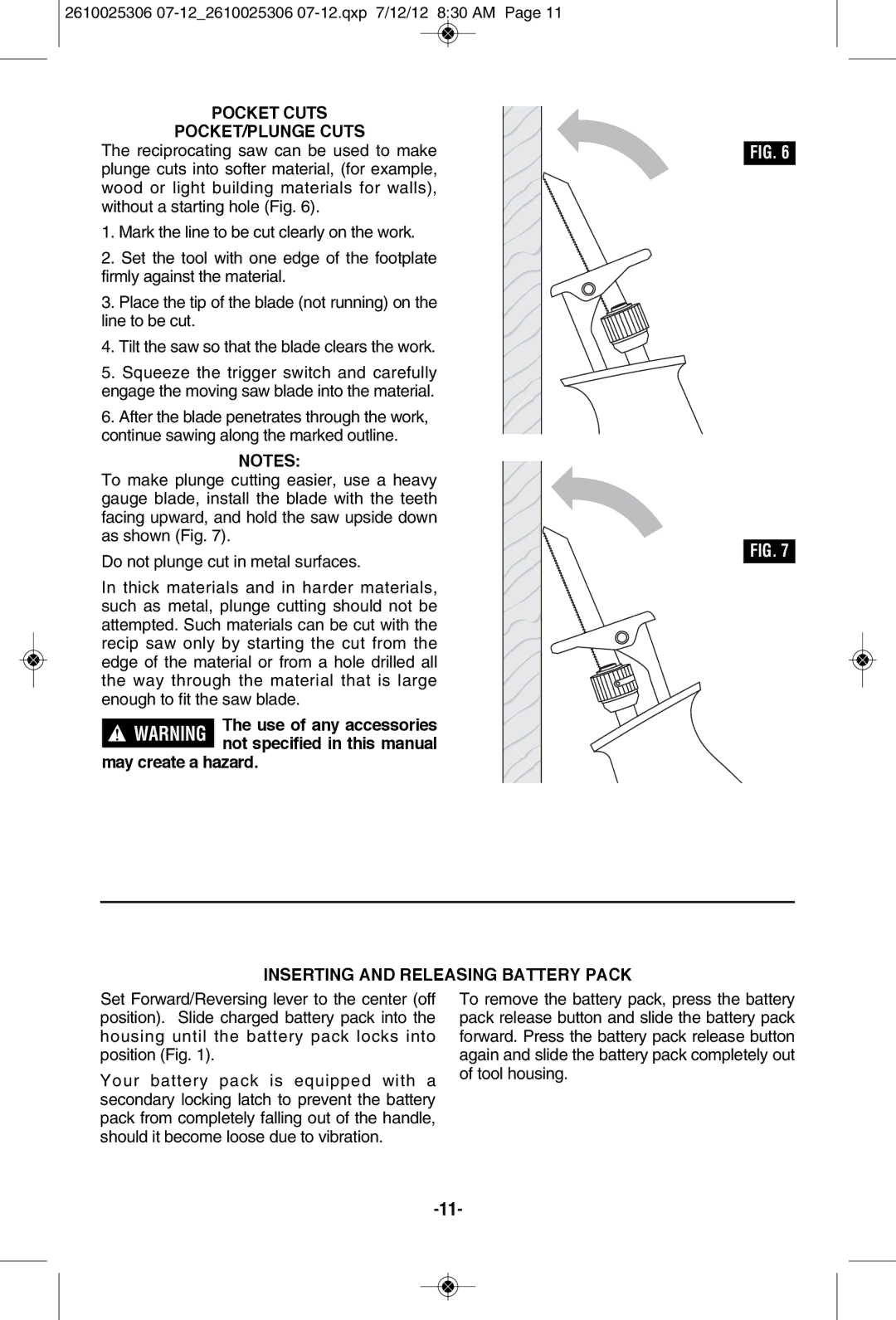
2610025306 07-12_2610025306 07-12.qxp 7/12/12 8:30 AM Page 11
POCKET CUTS
POCKET/PLUNGE CUTS
The reciprocating saw can be used to make plunge cuts into softer material, (for example, wood or light building materials for walls), without a starting hole (Fig. 6).
1.Mark the line to be cut clearly on the work.
2.Set the tool with one edge of the footplate
firmly against the material.
3. Place the tip of the blade (not running) on the line to be cut.
4. Tilt the saw so that the blade clears the work.
5. Squeeze the trigger switch and carefully engage the moving saw blade into the material.
6. After the blade penetrates through the work, continue sawing along the marked outline.
NOTES:
To make plunge cutting easier, use a heavy gauge blade, install the blade with the teeth facing upward, and hold the saw upside down as shown (Fig. 7).
Do not plunge cut in metal surfaces.
In thick materials and in harder materials, such as metal, plunge cutting should not be attempted. Such materials can be cut with the recip saw only by starting the cut from the edge of the material or from a hole drilled all the way through the material that is large enough to fit the saw blade.
The use of any accessories not specified in this manual
may create a hazard.
INSERTING AND RELEASING BATTERy PACK
FIG. 6
FIG. 7
Set Forward/Reversing lever to the center (off position). Slide charged battery pack into the housing until the battery pack locks into position (Fig. 1).
Your battery pack is equipped with a secondary locking latch to prevent the battery pack from completely falling out of the handle, should it become loose due to vibration.
To remove the battery pack, press the battery pack release button and slide the battery pack forward. Press the battery pack release button again and slide the battery pack completely out of tool housing.
